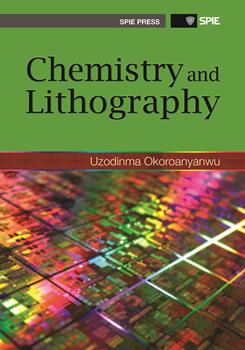|
Present-day lithographic chemicals, including inks, resists, antireflection coatings, casting solvents, developers, strippers, etc., evolved largely from technologies developed in the printing industry. Integrated circuits and circuit boards were unheard of in 1798 when Senefelder invented lithography and in 1826 when Niepce invented photolithography. Since those early days, lithographic chemicals have evolved from being extracted from natural sources to being derived almost exclusively from synthetic sources today. They have also grown in importance along with the electronics industry, since even the simplest electronic systems today are patterned with resists, using ever more sophisticated arrays of lithographic chemicals. In this chapter, we present an overview of lithographic chemicals used in patterning integrated circuit devices and printing newspapers, textbooks, posters, and the like, while making historical references to similar materials used in lithography in earlier times. 5.2 Resists Resist formulations may generally contain these components: (i) film-forming resin, (ii) solvent, (iii) sensitizer or photoinitiator or photoacid generator, and (iv) additives. The dried film coated from a solution containing the above ingredients undergoes changes when exposed to radiation of a certain wavelength or electrons or even ions; this exposure alters the solubility in the developer of the exposed areas relative to the unexposed areas. If the resist prints in a negative tone, the exposed areas are hardened, whereas positive-tone resists are made more soluble in the developer solvent by the exposure. The changes in the exposed areas are due to some chemical reactions brought about by the absorbed radiation. Historically, it is possible that the resin itself is intrinsically photosensitive (e.g., bitumen of Judea or Syrian asphalt), in which case it would be classified as a one-component resist; but much more commonly some substance or substances that are capable of absorbing radiation energy and bringing about an insolubilizing reaction (e.g., ammonium dichromate, DNQ) have been added to the formulation, in which case the resist would be classified as a multicomponent resist (see Fig. 5.1). These substances are referred to as "sensitizers" or "photoinitiators" and are invariably present in modern-day resist formulations. A related group of compounds used in chemically amplified resists, but that all the same function in an analogous fashion to sensitizers, are called photoacid generators (e.g., onium salts). Additives are substances that enhance or improve the performance of the resist. Examples include leveling agents, surfactants, antioxidants, stabilizers, and related chemicals.2 A typical advanced resist today may comprise 50%-90% by weight of solvent, 10%-40% by weight of resins, 1%-8% by weight of sensitizers or photoacid generators, and less than 1% by weight of surfactants, antioxidants, leveling agents, and other additives. |
|
|


